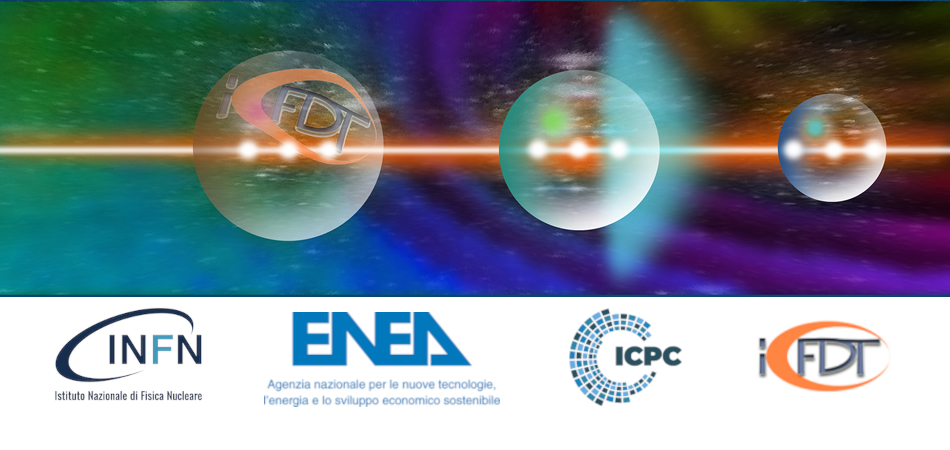Speaker
Description
The measurement of 14 MeV neutrons present in a deuterium-deuterium plasma is an important parameter for the estimation of the triton burn up component in a tokamak. The deuterium-deuterium reaction has two equally possible branching ratios, one of which leads to the presence of tritons in the plasma. A fraction of these can cause a deuterium-tritium reaction, producing 14 MeV neutrons that constitute up to a few percent of the total neutron yield and provide information on the confinement of the tritons.
During the initial operation phases of the Divertor Tokamak Test facility, time-resolved triton burn up measurements will be carried out by means of a dedicated set of detectors distributed around the machine in the Torus Hall. Candidate detectors are a liquid scintillator (EJ301 type, 1.5 cm diameter and 1 cm thickness) and two 10-pixel single-crystal diamond matrices (4.5 mm $\times$ 4.5 mm $\times$ 200 $\mu$m and 4.5 mm $\times$ 4.5 mm $\times$ 50 $\mu$m respectively). Such set of detectors has been selected in order to cover the entire range of the total DTT neutron yield for various power scenarios, with the scintillator working for a neutron yield up to $10^{14}$ n/s, the thicker sCD working between $10^{14}$ - $10^{16}$ n/s and the thinner sCD between $10^{16}$ - $10^{17}$ n/s.
The three detectors are all sensitive not only to 14 MeV neutrons but also to lower energy neutrons and gamma-rays. Even though these unwanted signals can be rejected during data processing by setting appropriate energy thresholds in the spectra and using pulse-shape discrimination analysis, the presence of gamma-rays and the high flux of the predominant 2.45 MeV neutrons (produced by deuterium-deuterium fusion) limit the range of operation of the detectors due to pulse pile-up and to the load they produce on the scintillator photomultiplier, the front-end and the back-end electronics.
A method to improve the triton burn up measurement statistics is to use appropriate shielding materials in front of the detectors to reduce the gamma-ray and lower-energy neutron component while maintaining as much as possible the flux and energy spectrum of the 14 MeV neutrons. A study of candidate materials of different atomic number, in various thicknesses and geometry configurations is carried out by means of MCNP simulations in order to assess the feasibility of such an approach for improved triton burn up measurements.
The present work provides firstly an overview of the proposed triton burn up detectors at the Divertor Tokamak Test facility and then presents the results of the MCNP simulations to evaluate the potential extension of their operating range by the addition of dedicated shielding units that improve the ratio of 14 MeV/2.45 MeV neutrons at the measurement position.

